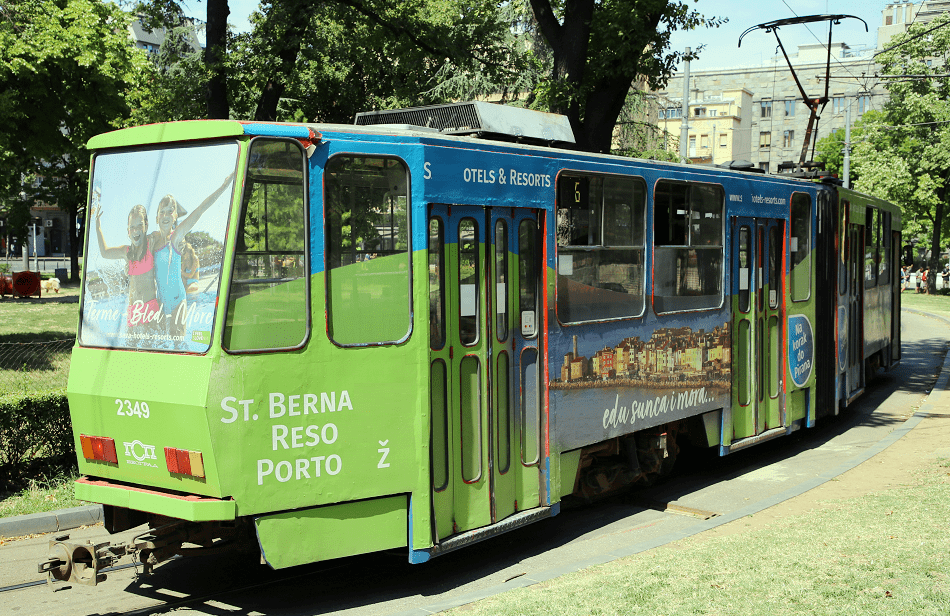Tatra KT4 is the name of a four-axle type articulated tramcar developed by the Czech firm ČKD Tatra. The first pre-production vehicles entered service in Potsdam in 1975, with the first production vehicles in 1977. A total of 1,747 units were built, with initial deliveries to East Germany (DDR) and later to the USSR and SFR Yugoslavia. KT4 variants were built for both standard gauge and metre gauge tramways. Production of the KT4 tramcar was halted in 1991 due to worldwide economic and political changes at the time. Production was briefly resumed in 1997 to construct the last 20 units for Belgrade, Serbia.
Since the start of the 1990s, many of the earliest production tramcars have gone through extensive refurbishment and rebuilding, including the replacement of folding doors and the installation of low-floor center sections.
The design of the tram, being without a bogie over the joint necessitates a scissor joint connecting both bogies such that the center of mass does not shift catastrophically, especially when turning.
The KT4YU is the Yugoslav variant of the tramcar, which were delivered to the Serbian and Croatian capitals. The last KT4s ever produced were delivered to Belgrade in 1997. Those tramcars were equipped with IGBT modules and recuperative braking and named KT4M-YUB (where B stands for Belgrade to be distinguished from Zagreb model). In 2002, 30 Belgrade tramcars were modernized in Goša FOM / Inekon, and marked as KT4-YUBM.












